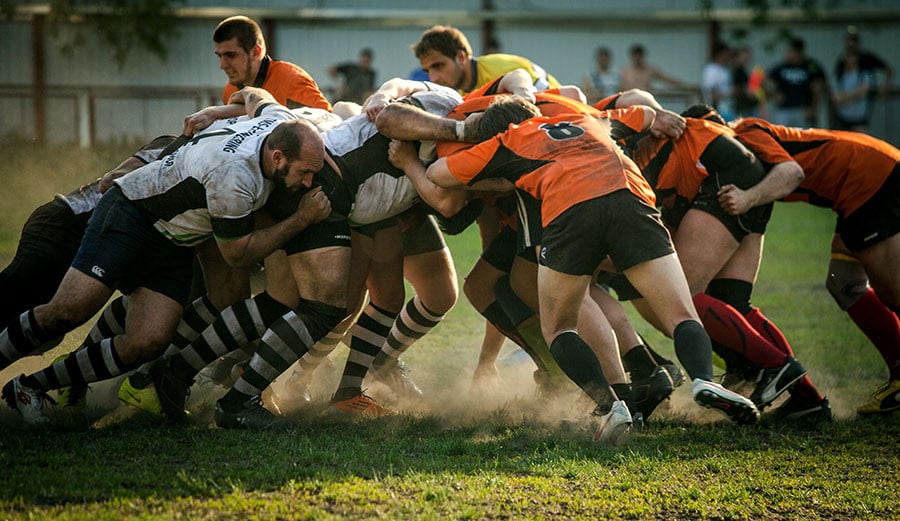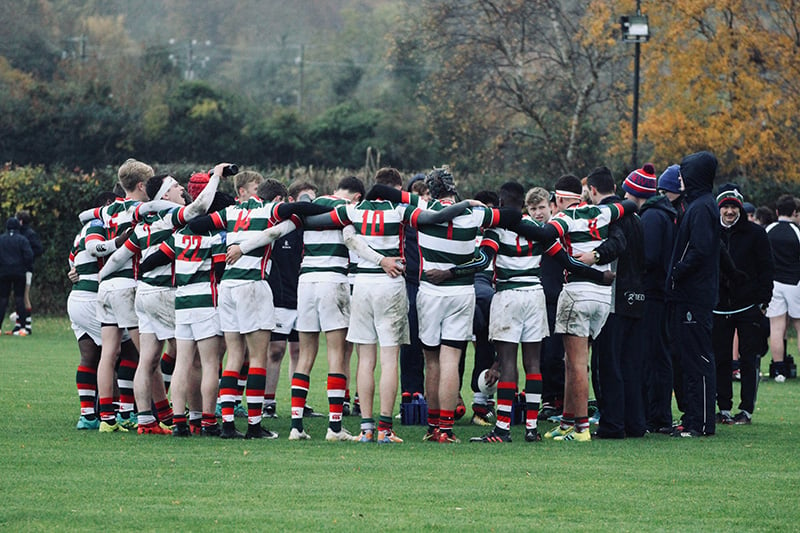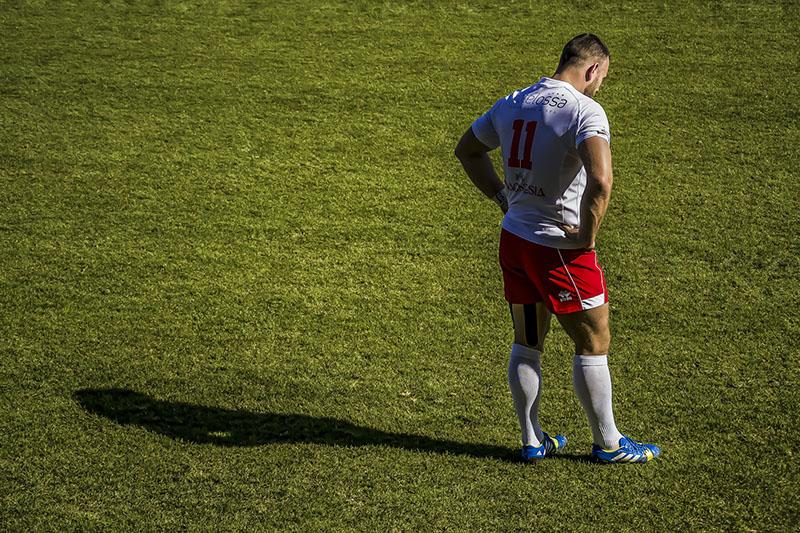According to legend, rugby originated from a football match. In 1863, the English Football Association (FA) was founded to standardise the unclear and diverse rules of football. Some clubs withdrew from the FA due to disputes over rule changes and formed the Rugby Football Union (RFU) on 26 January 1871. A now standardised set of rules eventually gave rise to the sport of rugby, which successfully distinguished itself from football. In 1895, 21 clubs from the north of England left the RFU because the federation did not allow for the professionalisation of the sport. The result was Rugby League with modified or adapted rules. It was not until 1995 that professional athletes were admitted to Rugby Union.
Rugby is particularly popular in the British Commonwealth and countries in the southern hemisphere. Unlike football, the sport of rugby has always had problems finding uniform rules. As a result, there are still numerous variations of the game in many countries today. Besides England, Wales and Scotland, rugby is also very popular in New Zealand, South Africa, Australia and Argentina. But rugby is also the most popular sport in oceanic countries such as Fiji, Tonga or Samoa.
In most rugby nations, rugby union is considered an establishment sport. Rugby league tends to be associated with the working class, particularly in the north of England and in Australia. Wales is an exception in terms of this social classification - rugby union in Wales is associated with villages of miners and industrial workers competing against each other. In New Zealand, the South of France, Scotland, Ireland and the Pacific Islands, rugby union is also associated with the working class.




.png)












































































